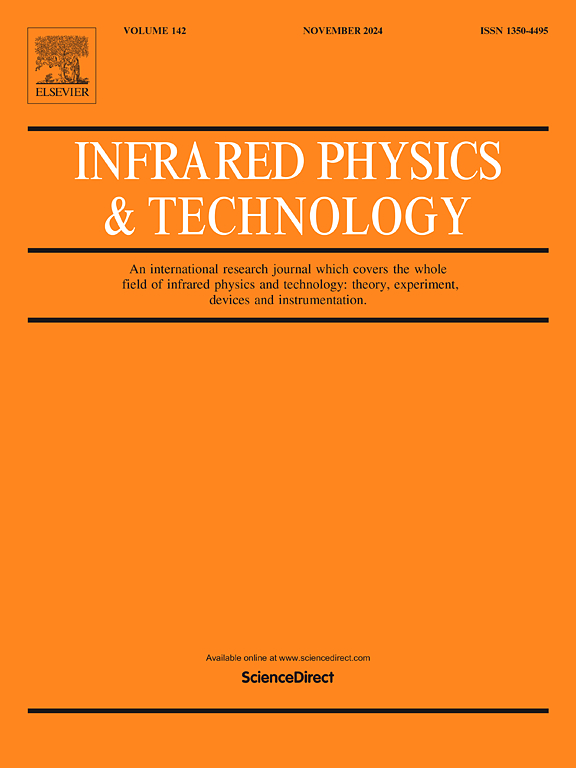TiN nanoparticles anchored on porous carbon black: The synergistic effect of porosity, surface roughness and surface plasmon on high-performance broadband infrared absorption
IF 3.1
3区 物理与天体物理
Q2 INSTRUMENTS & INSTRUMENTATION
引用次数: 0
Abstract
Porous carbon black loaded with TiN nanoparticles was developed as a broadband infrared (IR) absorber. The unique porous structure, characterized by variable pore sizes and random spatial distribution, effectively guides and absorbs electromagnetic waves across a broad wavelength range. The incorporation of TiN nanoparticles enhance the surface roughness, facilitating multiple reflection and scattering, thereby extending the light propagation path. This modification notably addresses the absorption deficiencies in the 3.5–6 μm wavelength range, significantly improving overall absorption efficiency. IR absorption tests revealed that the original film achieved an average absorption rate of approximately 93.7 % within the 2.5–20 μm range, while the addition of TiN nanoparticles increased the absorption rate to 95.73 %. Finite-difference time-domain simulations results demonstrated a significant increase in electric field intensity around the carbon surface and TiN nanoparticles at 5 μm, attributed to the radiative absorption properties of carbon and the surface plasmon characteristics of TiN at shorter wavelengths. This absorber layer shows high potential for IR sensor applications.
求助全文
约1分钟内获得全文
求助全文
来源期刊
CiteScore
5.70
自引率
12.10%
发文量
400
审稿时长
67 days
期刊介绍:
The Journal covers the entire field of infrared physics and technology: theory, experiment, application, devices and instrumentation. Infrared'' is defined as covering the near, mid and far infrared (terahertz) regions from 0.75um (750nm) to 1mm (300GHz.) Submissions in the 300GHz to 100GHz region may be accepted at the editors discretion if their content is relevant to shorter wavelengths. Submissions must be primarily concerned with and directly relevant to this spectral region.
Its core topics can be summarized as the generation, propagation and detection, of infrared radiation; the associated optics, materials and devices; and its use in all fields of science, industry, engineering and medicine.
Infrared techniques occur in many different fields, notably spectroscopy and interferometry; material characterization and processing; atmospheric physics, astronomy and space research. Scientific aspects include lasers, quantum optics, quantum electronics, image processing and semiconductor physics. Some important applications are medical diagnostics and treatment, industrial inspection and environmental monitoring.

 求助内容:
求助内容: 应助结果提醒方式:
应助结果提醒方式:


